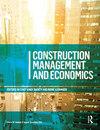建设中循环经济的障碍和推动者:从多系统视角构建实践框架
IF 3
Q2 BUSINESS
引用次数: 10
摘要
摘要在过去的十年里,日益增长的环境问题和资源短缺的威胁提高了人们对循环经济概念的兴趣。尽管如此,与其他行业相比,在建筑环境中实施CE实践的步伐较慢。该行业似乎缺乏对CE的系统性和多层次方面的清晰理解,尤其是与阻碍实际实施的障碍有关的理解。有鉴于此,本研究旨在考察现有的知识体系,从系统的角度阐明建筑中各个层面的CE障碍。为了实现这一目的,使用科学计量学分析来检查581篇关于CE实施障碍的文献计量学搜索过滤文章。通过对特定预定文章的内容分析,解释了关键问题、驱动因素和潜在解决方案。研究发现,CE实施的关键系统层面(微观、中观和宏观层面)是相互关联的。然而,每个级别的障碍和驱动因素可能有所不同。此外,本文将实施CE战略的主要障碍分为五个主题,即:定义和理论误解、政治和立法、社会和文化、金融和经济以及技术障碍。在此基础上,建立了四个跨领域的推动者,以推动建筑业从线性经济向循环经济的转变。这项研究的发现突出了当前研究的不足和挑战,同时为未来的研究提供了途径。它为行业内的从业者、政策制定者和研发机构提供了一个方便的CE实施参考点。最后,该研究提高了公众对CE障碍的认识,并指导AEC部门开发知识资本来克服这些障碍。本文章由计算机程序翻译,如有差异,请以英文原文为准。
Barriers and enablers of circular economy in construction: a multi-system perspective towards the development of a practical framework
Abstract Growing environmental concerns and the threat of resource scarcity have heightened interest in the Circular Economy (CE) concept over the last decade. Nonetheless, implementation of CE practice within the built environment has taken a slower pace in comparison with other industries. A clear understanding of systemic and multilevel aspects of CE, especially in relation to barriers that hinder practical implementation, appears to be lacking within the sector. In light of this, the study aims to examine the existing body of knowledge to elucidate, from a systemic perspective, CE barriers across various levels in construction. To achieve this purpose, a scientometric analysis is used to examine 581 bibliometric-searched filtered articles on CE implementation barriers in construction. Key issues, drivers and potential resolutions are explained using content analysis of specific pre-determined articles. The study finds that critical system levels of CE implementation (micro, meso, and macro levels) are interrelated. However, barriers and drivers at each individual level may differ. Additionally, this paper categorises key barriers to implementing CE-aligned strategies into five main themes, namely: definition and theory misconception, political and legislative, social and cultural, financial and economic, and technological barriers. Based on these, four cross-cutting enablers are established to drive the transition from linear to circular economy in construction. The findings of this study highlight deficiencies and challenges in current research while providing a path for future studies. It provides a convenient point of reference for practitioners, policy makers, and research and development (R&D) institutions on CE implementation within the industry. Lastly, the study raises public awareness on CE barriers and guides the AEC sector to develop intellectual capital to overcome them.
求助全文
通过发布文献求助,成功后即可免费获取论文全文。
去求助
来源期刊

Construction Management and Economics
BUSINESS-
CiteScore
7.50
自引率
14.70%
发文量
58
期刊介绍:
Construction Management and Economics publishes high-quality original research concerning the management and economics of activity in the construction industry. Our concern is the production of the built environment. We seek to extend the concept of construction beyond on-site production to include a wide range of value-adding activities and involving coalitions of multiple actors, including clients and users, that evolve over time. We embrace the entire range of construction services provided by the architecture/engineering/construction sector, including design, procurement and through-life management. We welcome papers that demonstrate how the range of diverse academic and professional disciplines enable robust and novel theoretical, methodological and/or empirical insights into the world of construction. Ultimately, our aim is to inform and advance academic debates in the various disciplines that converge on the construction sector as a topic of research. While we expect papers to have strong theoretical positioning, we also seek contributions that offer critical, reflexive accounts on practice. Construction Management & Economics now publishes the following article types: -Research Papers -Notes - offering a comment on a previously published paper or report a new idea, empirical finding or approach. -Book Reviews -Letters - terse, scholarly comments on any aspect of interest to our readership. Commentaries -Obituaries - welcome in relation to significant figures in our field.
 求助内容:
求助内容: 应助结果提醒方式:
应助结果提醒方式:


